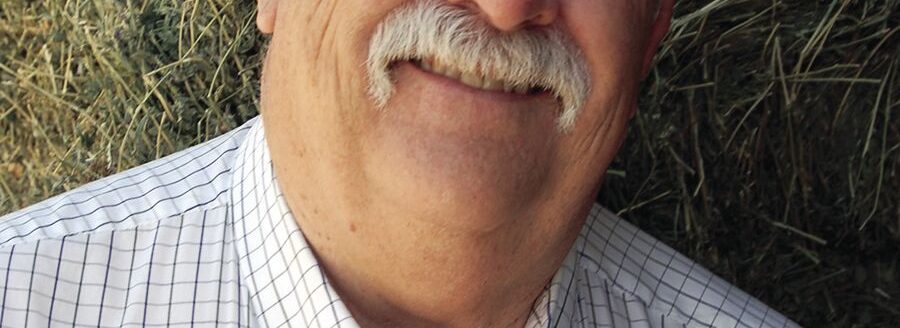Hay preservative offers growers latitude to maintain quality

A preservative can help hay, alfalfa and forage growers to preserve quality when long-term value is at stake.
New Holland’s CropSaver hay preservative allows producers to bale all types of hay with up to 30% moisture content, while retaining quality and increasing storage potential, according to the company.
Jim Franceschetti, New Holland aftermarket solutions manager, said the challenges producers faced with drought was widespread this past year and growers faced tighter windows to capture top quality.
He visited with livestock representatives during a recent meeting in Wisconsin and drought has been a major challenge, particularly for producers in the western regions. Producers have emphasized the need to maximize yields and do the best they can.
“Drought is a stressful time,” Franceschetti said. “For a hay producer drought is not something you want to see or be a part of but unfortunately it is what it is and you have to make the best of it.”
Extending quality
Hay preservative is best used on hay that is 16% to 30% moisture, he said. A hay preservative adds benefit by extending the baling window. A producer can bale earlier in the day and later in the day, the aftermarket solutions manager said, and that helps with time efficiency and that can mean having more bales at the right time.
“When it comes to hay itself, the preservative can be an inhibitor of spoilage, mold or any unwanted bacterial growth that you may have as a result of cutting or baling and the preservative helps to maintain its freshness and that can last for years,” Franceschetti said.
The preservative can continue to do its job when hay is in storage so anaerobic and chemical reactions going on the bale are doing it effectively and appropriately without unnecessary spoilage.
“Applying a preservative that holds moisture will help make sure you are doing everything you can to control that process.”
The result is producers will have better tonnage and relative feed value if they are selling hay or if they are feeding their own livestock it will be high quality feed, he said.
Adding to life of bale
The preservative can extend the life of a bale for years with proper storage, he said. Good storage can include a bale wrap or silage film. Also, another process is to have them sheltered and off the ground so moisture can properly run off.
“With the hay preservative you will have quality that can last for years to come,” Franceschetti said.
Extending the life of a bale and maintaining quality is a good investment, he said, particularly when future growing conditions are an unknown.
“With a drought you want to maximize the potential of the hay you are getting,” Franceschetti said. “A fact of the matter is the crop is not going to be as good. You are not going to get as much hay production as you would in a wet season or in a season with healthy weather.”
With any hay that is being cut and baled the producer needs to have as much of the hay at 18% to 22% moisture. With a preservative the grower is maximizing that opportunity by being able to bale up to 30% moisture. The preservative can be used on any bale size and is not brand specific. It can be set up to be applied either in automatic or manual mode.
His company is known for hay equipment that makes a high quality product.
Sign up for HPJ Insights
Our weekly newsletter delivers the latest news straight to your inbox including breaking news, our exclusive columns and much more.
“At the end of the day it costs the same to make a good bale of hay as it does a bad bale of hay,” he said. “You want to do everything in your power to make the best hay bale possible. Trusting New Holland equipment to create uniform advanced bales and consider using a hay preservative CropSaver product to treat the hay helps to make the best hay possible.”
Equipment makes a difference
New Holland is set up with its hay and forage lineup, he said, to give growers latitude to meet their individual needs. He also praised the New Holland dealership network, which can help answer grower questions.
The relationship the company’s engineers, product team and dealers have with growers is essential, he said. The feedback means growers can be assured the New Holland products meet their needs in the fields.
As growers consider adding future hay, alfalfa and forage acreage they need to look at what equipment is needed, he said, one of New Holland’s goals is to make sure they have the right equipment. Balers can be tailor made for the crops, and the hay preservative is also an aftermarket product that makes a difference.
From Franceschetti’s experience, it is also important to have dialogue with a dealer who can often provide good insight, not just on parts and service but also on practices other growers might employ on their operation.
As he looks to the 2022 season, he stresses the importance of maintenance and regularly checking field conditions, which can change even in a day.
“Don’t assume what works today will work tomorrow,” Franceschetti said.
If drought occurs, he said, working with the moisture window is the key and a hay preservative can really pay dividends.
Dave Bergmeier can be reached at 620-227-1822 or [email protected].


